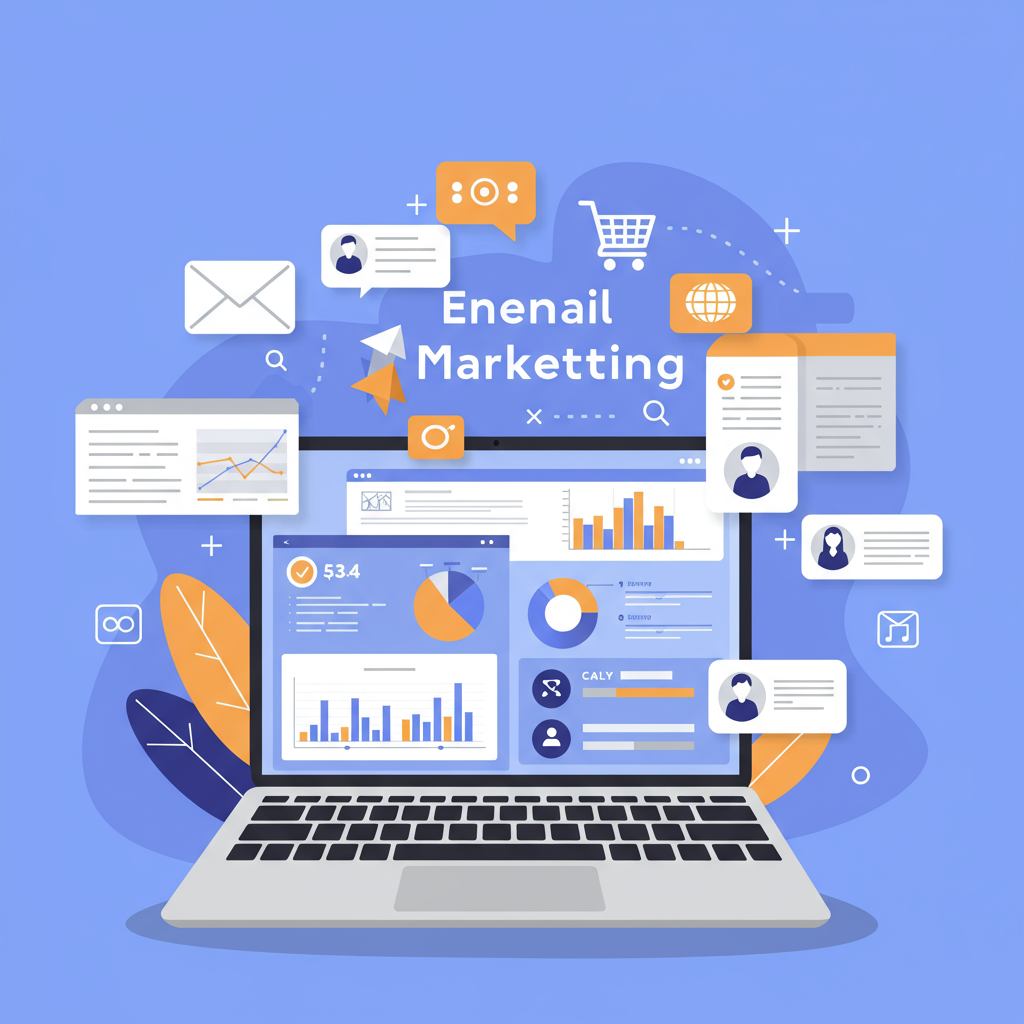Unlock unparalleled growth and customer loyalty with these cutting-edge strategies for your Shopify store.
As a Shopify merchant, I know firsthand the constant hustle to stand out and connect with customers. In 2025, while new platforms emerge, one channel remains an undeniable powerhouse for driving sales and building lasting relationships: email marketing.
I’ve seen businesses transform by leveraging their email lists effectively, turning casual browsers into loyal advocates. It’s not just about sending out promotions; it’s about crafting a personalized journey for each customer.
Today, I want to share my essential tips and strategies for mastering Shopify email marketing in 2025. These aren’t just theoretical concepts; these are actionable insights I’ve gathered and refined, designed to help your store thrive.
First things first, you need a robust email list. I always emphasize quality over quantity. Focus on attracting subscribers who are genuinely interested in what you offer.
My go-to methods include strategically placed pop-ups with compelling offers (e.g., a discount on their first purchase), exit-intent pop-ups, and integrated sign-up forms on my website’s footer and blog.
Consider offering exclusive content, early access to sales, or a valuable lead magnet like a guide or checklist in exchange for an email address. This builds trust from the very beginning.
Once you have subscribers, the next critical step, in my experience, is segmentation. Sending generic emails to everyone is a recipe for low engagement and high unsubscribe rates.
I segment my audience based on various factors: purchase history (first-time buyers, repeat customers, high-value customers), browsing behavior (products viewed, categories explored), geographic location, and even how they signed up.
Shopify’s native customer segmentation tools, combined with advanced email marketing apps, make this process incredibly powerful. I can tailor messages to resonate deeply with each group.
Automated email flows are where the magic truly happens. My absolute favorite, and arguably the most important, is the welcome series. This is your chance to make a fantastic first impression.
I typically set up a 3-5 email welcome sequence. The first email thanks them for subscribing and delivers any promised incentive. The second introduces my brand story and values.
Subsequent emails might highlight best-selling products, answer common FAQs, or share social proof. The goal is to onboard them, build rapport, and gently guide them towards their first purchase.
Abandoned cart emails are non-negotiable for any Shopify store. I’ve seen these recover a significant percentage of lost sales, often paying for themselves many times over.
My strategy involves a series of 2-3 emails. The first, sent within an hour, is a gentle reminder. The second, after 24 hours, might include a small incentive like free shipping.
The third, after 48-72 hours, could create a sense of urgency or offer a personalized recommendation based on the items left behind. Remember, timing and a clear call to action are key.
Don’t stop communicating after a sale! Post-purchase emails are vital for building loyalty and encouraging repeat business. I use these to confirm orders, provide shipping updates, and offer helpful tips related to their purchase.
A few days after delivery, I send a follow-up asking for a review or feedback. This not only gathers valuable social proof but also shows customers I care about their experience.
Later, I might send personalized recommendations for complementary products or exclusive offers for their next purchase, based on what they’ve already bought.
In 2025, personalization goes beyond just using a customer’s first name. I’m increasingly leveraging AI-powered tools to analyze customer data and deliver hyper-relevant content.
This means dynamic content blocks that change based on browsing history, product recommendations powered by machine learning, and even predictive analytics to anticipate future needs.
I find that the more personalized an email feels, the higher its open and click-through rates. It transforms a mass communication into a one-on-one conversation.
A/B testing is my secret weapon for continuous improvement. I constantly test subject lines, call-to-action buttons, email layouts, and even send times to optimize my campaigns.
Re-engagement campaigns are also crucial. I identify inactive subscribers and try to win them back with special offers or by asking them to update their preferences. If they don’t respond, it’s often best to remove them to maintain list hygiene.
Integrating email marketing with my loyalty program is another powerful tactic. I send exclusive rewards, early access to new products, and birthday discounts to my most loyal customers via email.
Looking ahead to 2025, I anticipate even deeper integration of AI for content generation and predictive analytics. Interactive emails, allowing customers to browse products or answer polls directly within the email, will also become more prevalent.
Privacy regulations will continue to evolve, so I always ensure my practices are transparent and compliant, building trust with my audience. Consent is paramount.
For Shopify merchants, there are fantastic email marketing apps like Klaviyo, Omnisend, and Mailchimp that integrate seamlessly, offering advanced automation, segmentation, and analytics features. I encourage you to explore which one best fits your needs and budget.
What do you think about these strategies? Have you found particular success with any of these tips, or do you have other insights to share?
Email marketing in 2025 isn’t just about sending messages; it’s about building a community, fostering relationships, and driving sustainable growth for your Shopify store. By implementing these strategies, I’m confident you’ll see remarkable results.
I encourage you to start small, test frequently, and always put your customer at the heart of your email marketing efforts. The payoff in customer loyalty and increased revenue will be immense.






